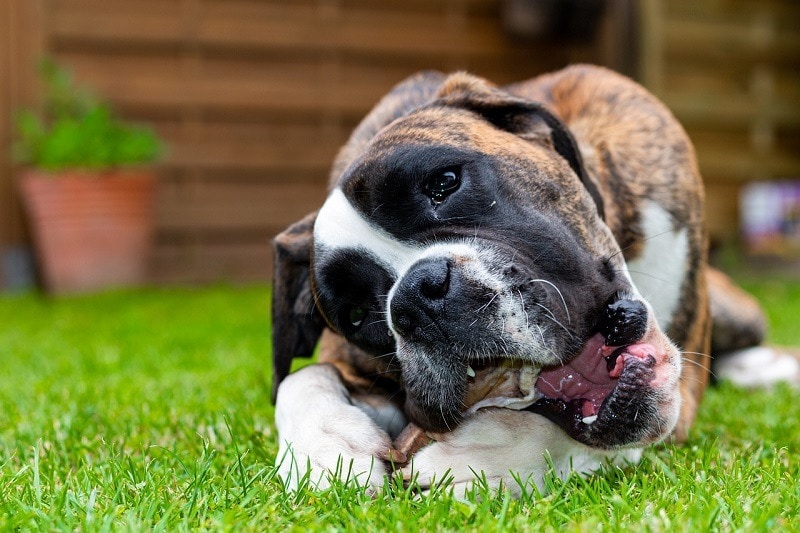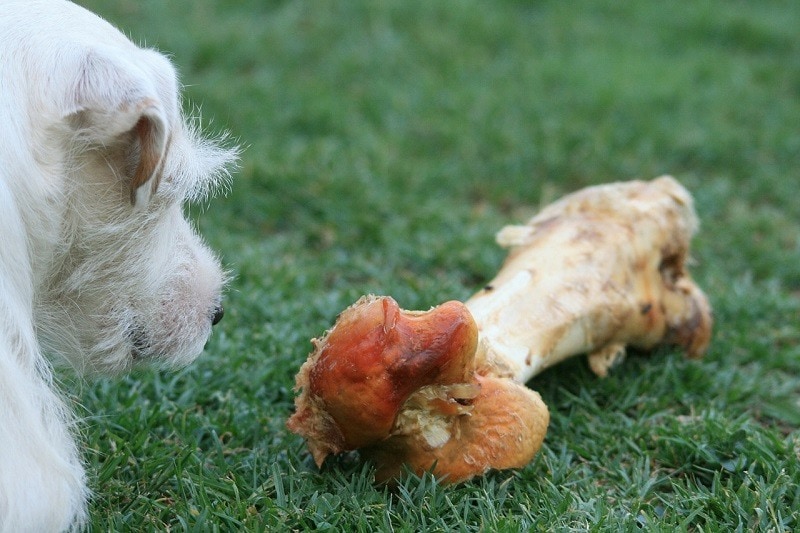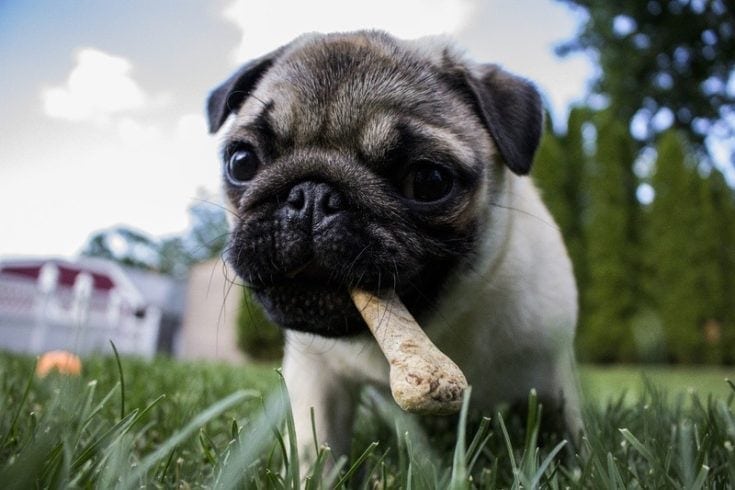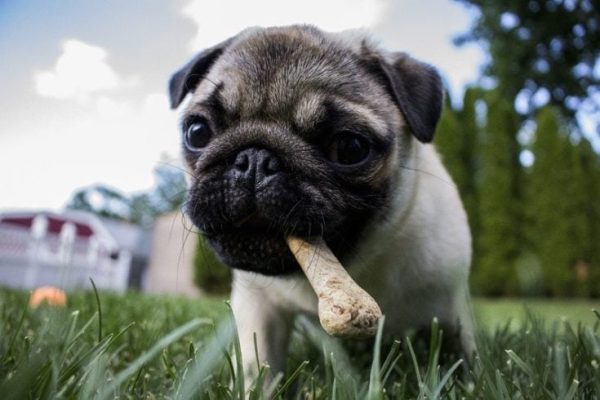Dogs and bones are a combination as old as time. Dogs have been shown chewing bones in popular media for so long that it’s hard to tell where the association came from in the first place. Still, the association isn’t going anywhere, especially since it has plenty of roots in reality.
So, why do dogs love bones so much? Many dog owners can attest to the fact that dropping a bone in their dog’s paws can keep them occupied for hours and help get out a lot of pent-up chewing energy. Here are three reasons your dog adores bones.
The 3 Reasons Dogs Chew Bones
1. They’re Delicious and Nutritious
Bones represent an excellent source of nutrition for dogs. They’re omnivorous, so they get their nutrition from both plant and animal matter.
Bone marrow contains a lot of essential nutrients and healthy fats that are both tasty and nutritious. Historically, dogs would chew on marrow bones to help sustain them while hunting and protecting their masters.
It’s not just the marrow that contains fat, either. Fats hold the bone together structurally, so just gnawing on the bone provides essential nutrients. Aside from healthy fats, bones also represent an excellent source of calcium for dogs.
Raw bones also often have leftover meat that they can snack on as they chew. While dogs nowadays get all their essential nutrients from their dog foods, their ancestors would have needed to ensure they got every ounce of nutritional value they could get out of their environments.

2. It’s Fun for Them
It’s not just healthy for dogs to chew on bones; it’s also fun for them! Dogs enjoy chewing on things just for fun, and bones can be a healthy outlet for this behavior. If you have a dog that likes to gnaw on something and accidentally destroys things, a marrow bone can be a great addition to their toy repertoire.
Dogs learn to chew when they’re very young. Chewing on toys and other objects helps alleviate discomfort during the teething stage. This chewing stimulates them mentally and satisfies a lot of their prey drives.
When they get older and have sharper teeth, chewing can become a destructive behavior. So, divert your dog’s attention away from your shoes and onto a bone or antler that they can go to town on without destroying right away!
3. It Helps Clean Their Teeth
Chewing on bones also helps clean their teeth. The chewing motion not only helps dislodge food particles stuck in their teeth but also helps prevent plaque build-up as their teeth will scrape against the surface of whatever they’re chewing on.
This makes bones ideal for improving their dental health since a solid marrow bone or antler will help scrape away the plaque on their teeth.


Safe Ways to Give Your Dog a Bone
Don’t just start throwing your dog bones from the dinner table. Despite these health and wellness benefits, it can still be dangerous to give bones to your dog, and many vets will recommend against it because irresponsible feeding practices can be fatal.
Here are some basic tips for giving bones to dogs:
- Cooked bones should never be given to dogs since cooking them makes them brittle and prone to splintering. These splinters could cut your dog’s mouth or throat if ingested and could be fatal.
- Small bones should not be given to large dogs. They can be swallowed, and the dog can choke on the bone, even to the point of death. Any bones given should be appropriately sized for your dog to avoid any choking hazards.
- While some large dogs can handle small bones, it’s often better safe than sorry. You know your dog’s chewing style best; so, use your best judgment on the size of the bones that they receive. If you have a dog who can’t be trusted not to swallow a small bone, make sure you take the bone away from your dog once it’s small enough to fit in their mouth.
- Commercial marrow bones, antlers, and other chew toys are okay to feed your dogs. They’re made with dogs in mind and are never cooked to keep them from becoming brittle. Raw chicken, lamb, turkey, and beef bones are also okay to feed your dogs.
- Any raw bones should be refrigerated when your dog isn’t chewing on them and discarded after a few days. Keeping a raw bone for too long, even in the refrigerator, is a breeding ground for bacteria that can make your dog sick.
- You should always monitor your dog when they’ve got a bone. Even if a bone isn’t brittle, it can still break or splinter, and you’ll want to be able to respond quickly and take the bone away if it does.
- If you have more than one dog, keep an eye out for signs of aggression between them. Dogs can be protective over bones and might react aggressively when they have a bone, even if they are usually very docile.
Conclusion
Bones are a fantastic addition to your dog’s diet. They present various health and wellness benefits when fed responsibly and can help entertain and stimulate your dog! As long as you’re vigilant about the conditions and circumstances under which your dog gets provided bones, they shouldn’t present any significant health risks.
See also:
Featured Image Credit: PxHere











